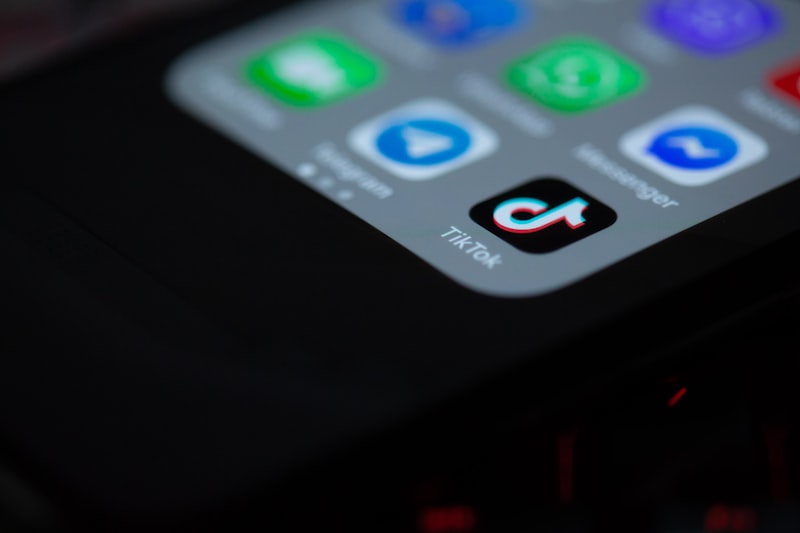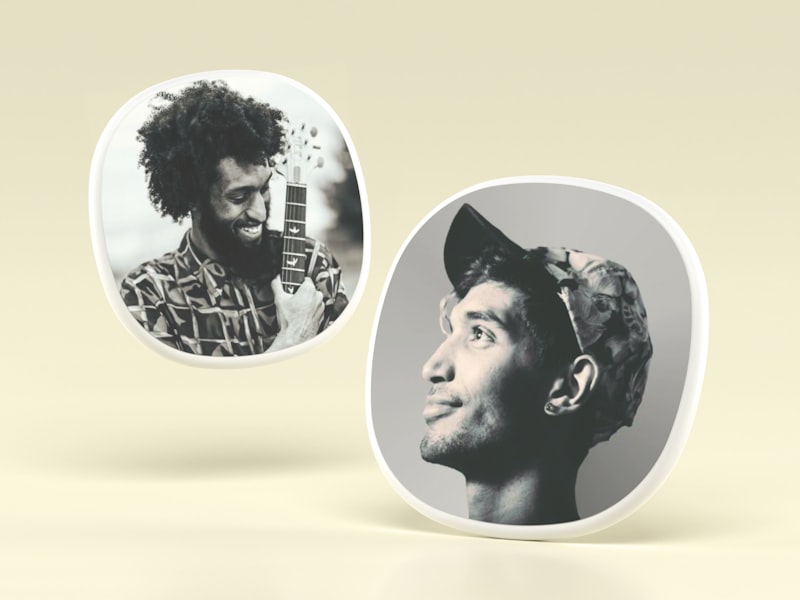You know those things you see on the internet that just makes you say, "Why is this so popular?" or "How did this get so many views?" Well, we're here to tell you.
We've been studying viral content for some time now and we've come up with some conclusions that may surprise you. For example:
-The number of views a video gets has almost nothing to do with how good it is. In fact, the more popular a video is, the worse its quality tends to be.
-Videos that are longer than three minutes will never go viral. EVER.
But wait, there's more to it!


There's no such thing as viral marketing.
The term "viral marketing" suggests that you can create the conditions for something to go viral. But that's not true. In reality, there is no such thing as viral marketing—it's just an oversimplified way of describing the process of sharing a piece of content and how it spreads on social media.
You can't make something go viral. Period. That said, if someone shares your content with others and they share it with their friends...and those friends share it with their friends...then your brand has been positively affected by what we call "the power of word-of-mouth."

Things go viral because we want to connect with others.
You might think that people go viral because they're rich or famous, but that's not the case. Our brains are wired to be social and connect with others, even if it's through a computer screen. We want to know what other people think about something so we can join in on the conversation and feel like part of the group.
When you see something that you find funny, interesting, or helpful—you're more likely to share it with your friends because you want them to feel included too! The more people who see it, the better chance there is that everyone will get a laugh out of it (or at least agree on how dumb it is).
Stories about average Joes going viral show us how easy it is for anyone from all walks of life to be recognized by their peers based on just one post online—and I'm sure there are plenty more examples out there waiting for us!

Humor and shock value can take something viral.
Humor and shock value are two of the most common ways content goes viral. There's a reason for this: We humans are drawn to things that make us laugh, and we love to be surprised by things we never expected. These emotions also help us build bonds with others, which can be useful for spreading a message or product far and wide.
However, not all humor is appropriate for use in marketing! In fact, some jokes can even offend those who hear them—and you definitely don't want to alienate potential customers or clients!

Viral content is often controversial.
As you might have guessed, viral content often takes a controversial stance.
Customers and users may have strong opinions about a topic, so if you can find common ground with them, it’s likely that your message will resonate. However, this isn’t a license to be controversial for the sake of being controversial. It can backfire if not handled correctly.
The human brain is wired to recognize patterns.
Your brain is wired to recognize patterns. It's a survival mechanism that helped our ancestors avoid danger by quickly recognizing the signs of a predator, for example. But these days, our brains can recognize patterns in things that aren't inherently dangerous at all (like an internet meme about cats).
We see this kind of pattern recognition all over the place when it comes to memes: if you're familiar with an internet meme and someone shows you an image or video based on that meme for the first time, it probably won't take long before your brain starts supplying context for what might be happening in the new piece of media—even if that context isn't explicitly provided by whoever created it.
The reason why we're so good at recognizing these kinds of patterns is because they're everywhere in nature; people have been creating them forever! In fact, there are even moments when people create their own memes intentionally just so they can share them with others later on.
We are more likely to engage with something that will make us feel good about ourselves.
While it might seem like you're a normal human being who is perfectly capable of ignoring the praise-inducing features of your favorite content, research shows that we are more likely to engage with something that will make us feel good about ourselves.
The idea that we care about our own image can be traced back to what psychologists call the "self-serving bias." We tend to underestimate how much importance other people place on our appearance and personality—and therefore overestimate how much influence we have over their opinions. This leads us to value things in a way that makes us look better than others (even if they aren't).
It's easy to see this at work in social media: Instagram users meticulously curate pictures for their own benefit, selecting only those images where they look attractive or happy; Twitter users carefully craft profiles by choosing an avatar and bio as well-crafted as their tweets; Facebook users curate groups and lists so friends get an accurate representation of who they want their friends to think they are. But even outside of social media, people want others to view them favorably because it makes them feel good about themselves.
We like people for who we think they are, not for who they actually are.
We want to be seen as smart, sophisticated and thoughtful people. We also want to be seen as compassionate, caring and supportive of others’ ideas. In other words: we want to come across as good people.
The more someone's content aligns with our values—the things we believe in on a deep-seated level—the more likely we are to engage with it and share it online. This is why so many news articles about Syria go viral; they appeal to our desire to help others in need by adding something meaningful into the world (and hopefully making us feel good about ourselves).
The right timing can make or break things going viral.
With the right timing, you can make or break something going viral.
It depends on the audience. If your content is about a topic that's trending at the moment, then it may resonate with more people and be more likely to go viral based on its timeliness. For example, there was recently a video on YouTube that went viral about how scary it is when people talk loudly in movie theaters. This video resonated with viewers because they could relate to not wanting to be rude while watching a movie in public; however, since this video came out during Halloween season (and thus became associated with movies like Hocus Pocus), many viewers were able to identify with this experience even more strongly.
This also means that if you're trying to create content for your business—for example, marketing videos or blog posts—you should make sure that these items are published at an appropriate time of year so as not to lose out on any potential views from being too far away from their target audience's interests or needs (or both).
The science behind virality reveals that human psychology is at the core of what content spreads. By tapping into emotions like humor, outrage, or hope, and driving needs like self-expression, connection, and entertainment, viral content captivates the masses.
While the formula behind a viral smash hit may seem elusive, studying the drivers of shared experience provides a blueprint for content that resonates. In the end, virality is not about randomness or luck - it stems from understanding the human desire for emotion, meaning, and social interaction. Give people content that moves them, connects them, and brings joy - and the viral tide shall rise.
FAQ
1. What exactly makes something "go viral"?
For content to be considered viral, it needs to spread quickly and widely through social networks. Typically, viral content reaches a large number of people within a short timeframe by being frequently shared online. Some key indicators that a piece of content has "gone viral" include:
- Millions of views/shares within days or weeks
- Getting shared exponentially through social platforms
- Sparking conversations, reactions, and engagement amongst a large audience
- Getting picked up by mainstream media outlets
- Inspiring remixes, remakes, or spin-offs
So essentially, something goes viral when it captures the public's interest in a way that makes them enthusiastically share it until enormous numbers of people have seen it.
2. Why do certain things go viral while others don't?
There's no definitive formula for making something go viral, but some key ingredients seem to help, including:
Eliciting strong emotions: Content that makes people laugh, cry, get angry, or feel afraid/anxious often spreads more than benign content.
Tapping into cultural trends/topics: Content that incorporates recognizable aspects of pop culture or connects to what's currently popular tends to get more traction.
Relatability: People share things they personally relate to or that remind them of their own lives and experiences.
Entertainment value: Amusing, funny, or whimsical content captures attention and provides entertainment that people want to pass on.
Utility: Content that teaches a skill, solves a problem, or provides useful information tends to be eagerly consumed and shared.
Timeliness: Content that ties into current events or topics that are trending in the news often spreads quickly.
3. What role does emotion play in virality?
Emotion is one of the biggest drivers of virality. Content that arouses strong positive or negative feelings gets shared more than content that elicits only mild reactions. This is because emotions like excitement, outrage, indignation, hope, fear, or humor motivate people to share things with others. Sharing emotional content provides an outlet for people to express how they feel about something. Virality tends to happen when content strikes an emotional chord with the audience by evoking laughter, shock, inspiration, anger, anxiety, or other intense sentiment.
4. How does relatability drive virality?
Relatability is key for virality because people are more likely to share things they personally identify with. Content that depicts experiences, frustrations, or humor that viewers recognize from their own lives gets shared more than obscure content. Relatable content makes people feel validated in what they go through. It taps into shared cultural touchpoints and phenomena that many have experienced. If people feel "this is so me!" or "this is so true!" they are much more likely to hit that share button.
5. Why does entertainment value help content spread?
Entertainment value is important for virality because people have a very human desire to enjoy themselves and have fun. Amusing, humorous, or whimsical content often goes viral because it provides enjoyment that people want to share with others. Laughter and levity are social experiences that people want to pass on to brighten someone else's day too. Boredom is avoided through the passive entertainment of viral videos and memes. Playfulness and amusement motivate sharing, which spreads entertaining pieces far and wide very quickly.
6. How can utility and problem-solving contribute to virality?
Content that has utility value or solves problems has higher viral potential because it provides helpful, useful information that people want to pass on to assist others. Tutorials, how-tos, and life hacks often spread rapidly by offering practical solutions that viewers want to share with their networks. Factoids, data visualizations, and knowledge content hold informational value that people find worth disseminating. Useful takeaways give people a reason to share something so others benefit too.
7. What makes timing important for virality?
Timing plays a big role in virality as content that ties into current events or topics trending in the news spreads much faster. When content taps into what's already buzzing, it rides a wave of existing interest and conversation. Pop culture phenomena that provide a shared context also prime content to catch on quickly. Holidays, public figures/celebrities, and news events can all provide fertile ground for viral content by making it highly relevant to the current public discourse.
8. How do influencers or celebrities impact virality?
Influencers and celebrities can drive virality through their existing audience and networks. Because they often have millions of engaged followers, their content gets built-in exposure and circulation. Fans and those intrigued by celebrity lives tend to share any content produced by these famous figures. However, mundane or uninteresting content still won't spread just because it comes from someone famous. But intriguing, emotional, or relatable content from a celebrity can spread at unmatched speeds.
9. What motivates people to share viral content?
Some key motivations that drive people to share viral content include:
- The desire to entertain others
- The urge to connect with others through shared interests/experiences
- Spreading information they find useful, helpful, or interesting
- Furthering ideas or causes they care about
- Self-expression and defining their identity/values externally
- Being part of the cultural conversation around a phenomenon
- Fulfilling the human need for social interaction
10. Does going viral rely more on luck or strategy?
Going viral involves some amount of luck in timing and tapping into the cultural zeitgeist. But certain strategic elements can increase the odds of virality through understanding key drivers like emotion, utility, and relatability. While viral success can never be guaranteed, content creators can analyze the formula of past viral hits to incorporate viral ingredients into their content. Understanding the current cultural moment also helps raise the chances of tapping into what will resonate broadly. So virality relies on both calculated creative strategy as well as some degree of unpredictable timing and zeitgeist alignment.







